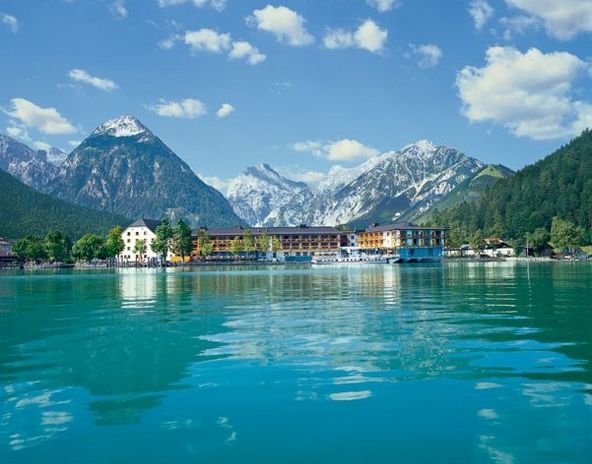Austria: Austria Economy Profile
2015/09/03
Economic Overview
Growth has failed to gather momentum
Real GDP growth disappointed again in 2014, posting just +0.4%, bringing an end to a 12-year period of beating the Eurozone average (+0.8% in 2014). This largely came from a shift in external trade activity since imports (+2.2%) outpaced exports (+1.8%), a major shift from 2013 (+0.1% and +1.3%, respectively), subtracting -0.1pps from annual growth. The moderate growth result could have been much worse, if not for a turnaround in private consumption (+0.2%) and a pickup in public spending (+1%) in 2014. Additionally, inventories contributed +0.2pps during the year while fixed investment, after edging up in the beginning of the year, shifted back to contraction in H2 and turned out flat in 2014 as a whole.
In Q1 2015, real GDP moved back to slight growth of +0.1% q/q, after stagnating in the two preceding quarters. Modest expansion in consumer (+0.1% q/q) and public (+0.3% q/q) spending was partly offset by shrinking fixed investment (-0.4% q/q), though that decline moderated from Q4 (-1% q/q). External trade activity picked up, with exports (+0.8% q/q) and imports (+0.9% q/q) growing at a similar pace, resulting in a neutral impact on Q1 GDP growth.
Weak business confidence and declining investment point to further delayed recovery
Advanced indicators for Q2 2015 suggest economic activity will remain subdued in the near term. Eurostat's Economic Sentiment Indicator (ESI) for Austria, which has been broadly in line with or even outperformed the Eurozone average from 2008-2013, has sharply deteriorated since early 2014 and remained on a low level to date, in contrast to the Eurozone. Looking at the ESI sub-components, both industrial and retail confidence have moderately recovered in April-May. However, consumer confidence and especially construction sector confidence have continued on a downward trend. Moreover, loans to NFCs have declined since December 2014, suggesting that investment is likely to contract in 2015.
Overall, Euler Hermes expects the growth pattern to shift once again in 2015, with domestic demand contributing little while external demand should continue to recover and drive growth on the back of the weaker EUR and lower oil prices. Real GDP is forecast to expand by +0.7% in 2015 as a whole. In 2016, a pick-up in consumer spending and a recovery in investment are projected to result in more balanced GDP growth of +1.4%.
Country Rating AA1
Strengths
Low systemic political risk
Good regional and international relations, EU membership
Eurozone membership provides low transfer and convertibility risk
Low inflation but no deflation risk anticipated
Consistent current account surpluses since 2002
Strong business environment
Weaknesses
Muted domestic demand since 2012
High trade dependency on Germany
Weak economic confidence since 2013
Banking sector vulnerabilities due to large exposure Central and Eastern Europe, including Russia
Service Industries
Manufacturing
Foreign Trade
 Austria depends heavily on trade, especially of manufactured goods that it sends out to European industrialized nations. Other major exports include forest products, including paper and pulp; iron and steel; and magnesite. Austria imports some types of machinery and vehicles and exports other types. The country's most significant imports include chemicals, foods, and petroleum.
Austria depends heavily on trade, especially of manufactured goods that it sends out to European industrialized nations. Other major exports include forest products, including paper and pulp; iron and steel; and magnesite. Austria imports some types of machinery and vehicles and exports other types. The country's most significant imports include chemicals, foods, and petroleum.- Austria News
-
- AUSTRIA: Austria Private Sector Growth Maintains Strong Momentum
- AUSTRIA: OPEC, non-OPEC agree first global oil pact since 2001
- AFGHANISTAN: Higher earning Why a university degree is worth more in some countries than others
- AUSTRIA: Minister Nkoana-Mashabane to host her Austrian counterpart
- ALBANIA: Europe in 2016: Terror fears, migration, politics. But economy may turn a corner
- AFGHANISTAN: Global growth will be disappointing in 2016: IMF's Lagarde
- Trending Articles
-
- QATAR: Qatar focuses on preventive care in new national health strategy
- UNITED STATES: EU's Juncker says ready to retaliate if needed over new U.S. sanctions on Russia
- SOUTH AFRICA: South Africa targets increased investment for food and beverages
- CHINA: Why China and Russia will be best frenemies forever
- CHINA: China energy regulator raises targets for curbing coal-fired power
- NIGERIA: The Federal Government Begs Dangote to Complete Refinery Before 2019











